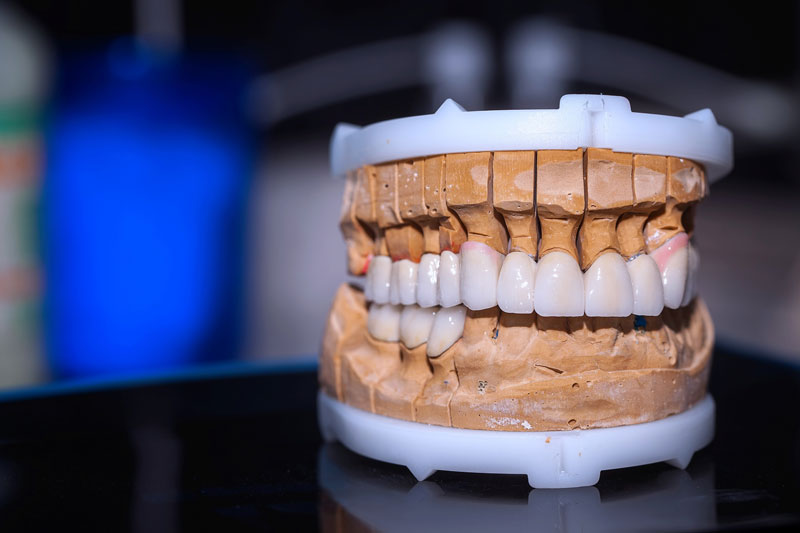When people have gum recession, it can give them tooth sensitivity, longer looking teeth, and changes to the appearance of their smile. This is because when gum tissues recede from teeth, the underlying tooth roots are exposed. If tooth roots are exposed, they are more susceptible to damage and sensitivity. Luckily, at a skilled and trusted periodontist’s practice, people with gum recession can receive gum grafting in Bloomfield Hills, MI for long-lasting results.
Exactly how long does gum grafting last? Continue reading to learn how long gum grafting can last.
How Can I Maintain The Site Of My Gum Grafting Procedure?
No matter what kind of gum grafting option a patient receives, at-home care is essential to ensure the gum grafting outcome is maintained for a lifetime. The patient should follow all post-bone grafting instructions, as well as brush and floss their teeth and gums twice daily. Smokers are usually asked to refrain from using cigarettes, as smoking can lead to future gum recession.
When Is Gum Grafting A Preferred Gum Recession Procedure Option?
Gum grafting in Bloomfield Hills, MI is widely used under a variety of circumstances. For instance, when people with gum recession experience sensitivity to cold or hot foods or drinks, they can get relief from it through gum grafting. The same is true for people who feel that their teeth look too long, and who want to aesthetically enhance the look of their smile.
Gum grafting, however, is more than just a way for patients to get a more even and natural-looking new smile. By adjusting a patient’s gum tissue, a periodontist can lessen their risk of developing problems associated with exposed tooth enamel, tooth roots, and jawbone.
What Happens During A Gum Grafting Procedure?
There are several different types of gum grafting procedures that patients can receive. Most of them, however, will follow the basic bone grafting procedure process of adding soft tissue material to an area of insufficient gum tissue coverage. The procedure happens in-office while the patient is appropriately numbed to ensure they have a comfortable and anxiety-free bone grafting procedure experience.
Although cutting and sutures may be required for gum grafting, patients typically recover quickly from it. In some cases, gum grafting can produce instant results. In others, results become evident gradually as the gum grafting site heals.
What Are The Gum Grafting Options I Can Receive?
A periodontist who performs advanced gum grafting procedures, usually have many types that patients can receive. These gum grafting procedures patients can receive are tunneling techniques, coronally advanced flap techniques, semilunar techniques, free gingival grafts, and lateral pedicle flaps. The following explains in detail how patients can benefit from receiving gum grafting options.
Tunneling Techniques:
The tunneling technique is ideal for people with sufficient amounts of gum tissue at the gum recession site. During this technique, the periodontist makes a small hole into the tissue where the gums are receding. With the assistance of special, patented equipment, the periodontist carefully accesses the gum tissue inside the hole and moves it into a much healthier position so it can fully cover the base of the teeth.
The tunneling technique is considered minimally invasive because it causes little trauma to the patient’s tissues. This means that the tunneling technique gives patients immediate cosmetic results and can be performed on many gum recessions sites during one office visit.
Coronally Advanced Flap Techniques:
The periodontist performing a coronally advanced flap technique will loosen the soft gum tissue at the recession site and maneuver it to provide more coverage of the patient’s tooth or teeth. A secondary surgical site to harvest a connective tissue graft may be needed to complete this gum grafting procedure option.
Semilunar Techniques:
Based on whether the patient has gum recession on their top or bottom teeth, the periodontist will create a half-moon shaped gum tissue flap below or above the recession location. The flap is then moved to cover the recession and sutured in place to prompt predictable recovery. Patients need to have enough gum tissue density in the tissues around their receding gums to receive this treatment.
Free Gingival Grafts:
A free gingival graft involves the periodontist harvesting tissue from the roof of the patient’s mouth. The harvested tissue is sutured into place so it can become part of the gums over a period of several months.
Lateral Pedicle Flaps:
For patients who have enough soft tissue to the side of their gum recession, a lateral pedicle flap procedure can be a good gum recession procedure for them to receive. This gum grafting process involves the periodontist carefully stretching and extending the gums to cover exposed tooth roots and other surfaces.
Come Explore Your Gum Grafting Procedure Options With Dr. Anderson
If you are looking for a long-term solution to your gum recession, then Dr. Lauren Anderson can provide you with the gum grafting options you need so you can have a successful new smile. Why wait to improve your smile with us? Get in contact with Dr. Lauren Anderson and our exceptional tam at our Anderson Periodontal Wellness office to schedule an appointment today!




